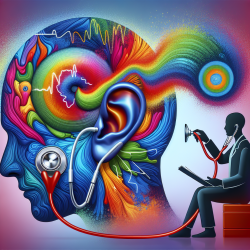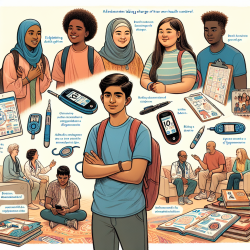In the realm of auditory therapy and evaluation, understanding the nuances of how our auditory system responds to different stimuli is crucial for developing effective therapeutic interventions. A pivotal study in this field, "The Effect of Auditory Stimulus Duration on the P300 Response," provides valuable insights into the auditory P300 response and its implications for auditory therapy and diagnostics. This blog aims to unpack the study's findings and explore how practitioners can apply these insights to enhance their therapeutic practices.
The P300 response is a component of the auditory evoked potential, widely recognized for its relevance in cognitive processes related to auditory stimulus evaluation. It is elicited when an individual is presented with a rare, unexpected stimulus amidst a series of common, expected stimuli, known as the "oddball" paradigm. The P300 response is characterized by a positive deflection in the EEG approximately 300ms after the presentation of the rare stimulus. Understanding the factors that influence the P300 response can significantly impact the assessment and treatment of auditory processing disorders.
The study conducted by O'Brien and Stuart aimed to investigate how variations in the duration of auditory stimuli affect the P300 response. Utilizing a sample of twelve young adults with normal hearing, the researchers presented tones of different durations and measured the resultant P300 responses. Their findings reveal that the duration of the auditory stimulus plays a critical role in eliciting the P300 response, with shorter latencies and greater response amplitudes observed at higher stimulus intensities and when the duration difference between the frequent and rare tone was the greatest.
From a clinical perspective, these findings have several implications:
- Enhanced Diagnostic Precision: The study's results suggest that adjusting the duration of stimuli in auditory evoked potential testing can enhance the salience of the P300 response. This can lead to more precise diagnostics, particularly in identifying and quantifying the severity of auditory processing disorders.
- Customized Therapy Plans: Understanding the impact of stimulus duration on the P300 response allows clinicians to tailor auditory therapy sessions to the specific needs of their clients. For instance, incorporating stimuli with durations that are known to elicit stronger P300 responses could improve the effectiveness of therapy for individuals with auditory processing disorders.
- Research and Development: The study opens avenues for further research into the auditory P300 response, encouraging the development of new therapeutic tools and strategies. It highlights the need for a deeper exploration of how other stimulus characteristics, such as frequency and intensity, interact with duration to influence the P300 response.
For practitioners looking to implement these findings into their practice, it is essential to consider the individual needs and capabilities of each client. While the study provides a general framework for understanding the impact of stimulus duration on the P300 response, the clinical application requires a personalized approach. Therapists should evaluate the auditory processing abilities of their clients and adjust the stimulus parameters accordingly to maximize therapeutic outcomes.
Moreover, the study's insights emphasize the importance of continued education and research in the field of auditory therapy. By staying informed about the latest research findings and incorporating evidence-based practices into their work, practitioners can enhance their therapeutic impact and contribute to the advancement of the field.
In conclusion, "The Effect of Auditory Stimulus Duration on the P300 Response" study offers valuable insights for speech-language pathologists and audiologists. By understanding the influence of stimulus duration on the P300 response, practitioners can enhance their diagnostic and therapeutic approaches, leading to improved outcomes for individuals with auditory processing disorders. As the field continues to evolve, integrating research findings into clinical practice remains a cornerstone of effective therapy.
To read the original research paper, please follow this link: The Effect of Auditory Stimulus Duration on the P300 Response.










